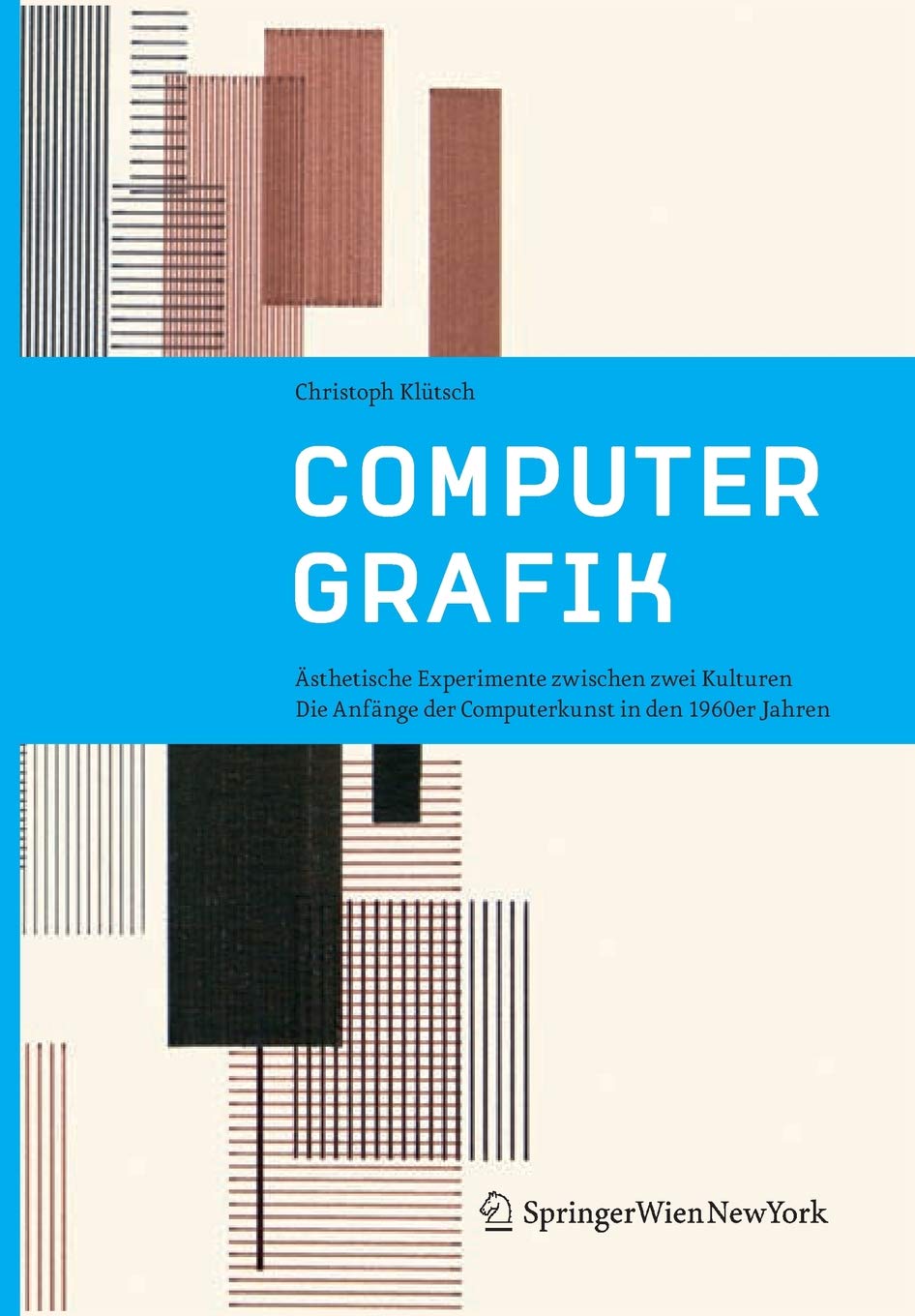Cybernetic Serendipidity: The Computer and the Arts (1968)
Filed under catalogue | Tags: · art, computer art, computer film, computer graphics, cybernetics, electronic art, media art

Cybernetic Serendipity was an exhibition of cybernetic art curated by Jasia Reichardt and shown at the Institute of Contemporary Arts, London, from 2 August to 20 October 1968. Later it moved to the Corcoran Gallery of Art in Washington D.C., running there from 16 July to 31 August 1969; and finally to the recently founded Exploratorium in San Francisco, where it ran from 1 November to 18 December 1969.
The show featured a comprehensive assortment of pioneer techno-artists including Edward Ihnatowicz, Liliane Lijn, Gustav Metzger, Nam June Paik, Nicolas Schöffer, and Jean Tinguely, and as represented by a number of their more noteworthy pieces including Paik’s Robot K-456 (1964), Schöffer’s CYSP-1 (1956); and Tinguely’s Méta-Matic (1961). It also included works by engineers, mathematicians, composers and poets. Reichardt also went on to serve as the editor of a book, Cybernetics, Art and Ideas (1971), extending this study of the relationship between cybernetics and arts.
Special Issue of Studio International
Edited by Jasia Reichardt
Publisher Studio International, London, 1968
1st edition July 1968
2nd edition (revised) September 1968
Book edition, Praeger, New York, 1969
Reprint of book edition, Studio International Foundation, London, 2018
101 pages
PDF (2nd ed., b&w, 8 MB, updated to OCR on 2015-12-17)
PDF (2018 repr. of 1969 ed., color, 253 MB, added on 2018-10-26, via)
Flipbook (2018 repr. of 1969 ed., added on 2018-10-26)
Radical Software (1970-1974)
Filed under magazine | Tags: · art, computer art, electromagnetism, software, technology, television, video, video art
The historic video magazine Radical Software was started by Beryl Korot, Phyllis Gershuny, and Ira Schneider and first appeared in Spring of 1970, soon after low-cost portable video equipment became available to artists and other potential videomakers. Though scholarly works on video art history often refer to Radical Software, there are few places where scholars can review its contents. Individual copies are rare, and few complete collections exist.
Radical Software was an important voice of the American video community in the early 70s; the only periodical devoted exclusively to independent video and video art at the time when those subjects were still being invented. Issues included contributions by Nam June Paik, Douglas Davis, Paul Ryan, Frank Gillette, Beryl Korot, Charles Bensinger, Ira Schneider, Ann Tyng, R. Buckminster Fuller, Gregory Bateson, Gene Youngblood, Parry Teasdale, Ant Farm, and many others.
Eleven issues of Radical Software were published from 1970 to 1974, first by the Raindance Corporation and then by the Raindance Foundation with Gordon and Breach Publishers.

Radical Software, Volume I, Number 1
The Alternate Television Movement,
Spring 1970
PDF

Radical Software, Volume I, Number 2
The Electromagnetic Spectrum,
Autumn 1970
PDF

Radical Software, Volume I, Number 3
Untitled, Spring 1971
PDF

Radical Software, Volume I, Number 4
Untitled, Summer 1971
PDF

Radical Software, Volume I, Number 5
Realistic Hope Foundation,
Spring 1972
PDF

Radical Software, Volume II, Number 1
Changing Channels, Winter 1972
PDF

Radical Software, Volume II, Number 2
The TV Environment, Spring 1973
PDF

Radical Software, Volume II, Number 3
Videocity, Summer 1973
PDF

Radical Software, Volume II, Number 4
Solid State, Autumn 1973
PDF

Radical Software, Volume II, Number 5
Video and Environment, Winter 1973
PDF

Radical Software, Volume II, Number 6
Video and Kids, Summer 1974
PDF
Christoph Klütsch: Computergrafik: Ästhetische Experimente zwischen zwei Kulturen. Die Anfänge der Computerkunst in den 1960er Jahren (2007) [German]
Filed under book | Tags: · aesthetics, art, computer art, computer graphics, cybernetics, information aesthetics

“Computergrafik ist ein innovativer Beitrag zur ungeschriebenen Geschichte der Computergrafik der 60er Jahre. Vor dem Hintergrund C. P. Snows “zwei Kulturen” Diskussion entwickelte sich in der Stuttgarter Schule um Max Bense eine neue Form generativer bzw. algorithmischer Kunst, die die Anfänge der digitalen Computergrafik markieren. Zentrale theoretische und künstlerische Konzepte werden anhand der Werke von Frieder Nake, Georg Nees, A. Michael Noll und Manfred Mohr diskutiert. Pionierleistungen, theoretische Diskussionen und die Bezüge zu zeitgenössischen Kunstbewegungen sind systematisch aufgearbeitet und ermöglichen die Einordnung einer ästhetischen Debatte, wie sie bisher weder im Kontext einer neuen Informationsästhetik noch in der Kunstgeschichte oder in medienwissenschaftlichen Untersuchungen geleistet worden ist. Interviews mit Pionieren der Computergrafik in Deutschland und den USA, die Aufarbeitung schwer zugänglichen Quellenmaterials und eine umfangreiche Bibliographie runden das Werk ab.”
Publisher Springer, 2007
ISBN 3211394095, 9783211394090
288 pages
Key terms: Computerkunst, Frieder Nake, Max Bense, Manfred Mohr, Computergrafik, Informationsästhetik, Bell Labs, Zagreb, Serendipity, Op-Art, C. P. Snow, Informationstheorie, Konkrete Kunst, Semiotik, Kybernetik, Helmar Frank, Computerkünstler, Bridget Riley, Turing test
Review: Mihai Nadin (Image, 2007).
PDF (updated on 2020-11-20)
Academia.edu (from author, added on 2020-11-20)

